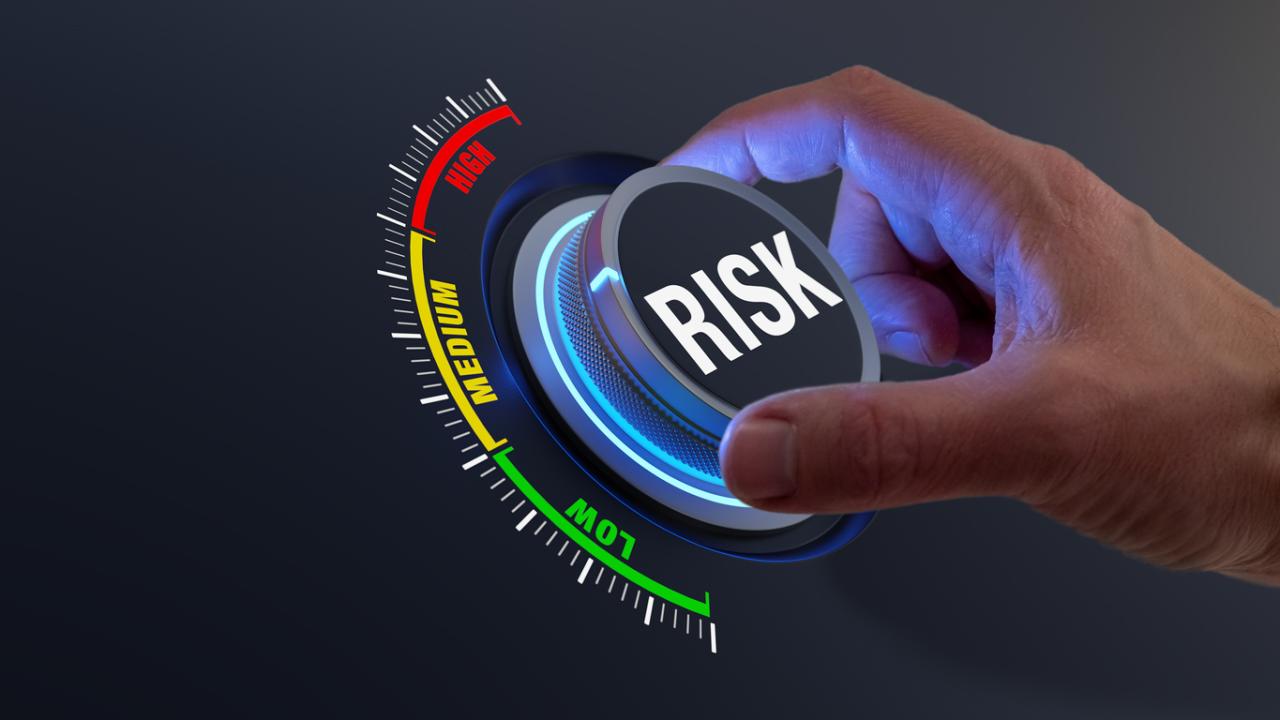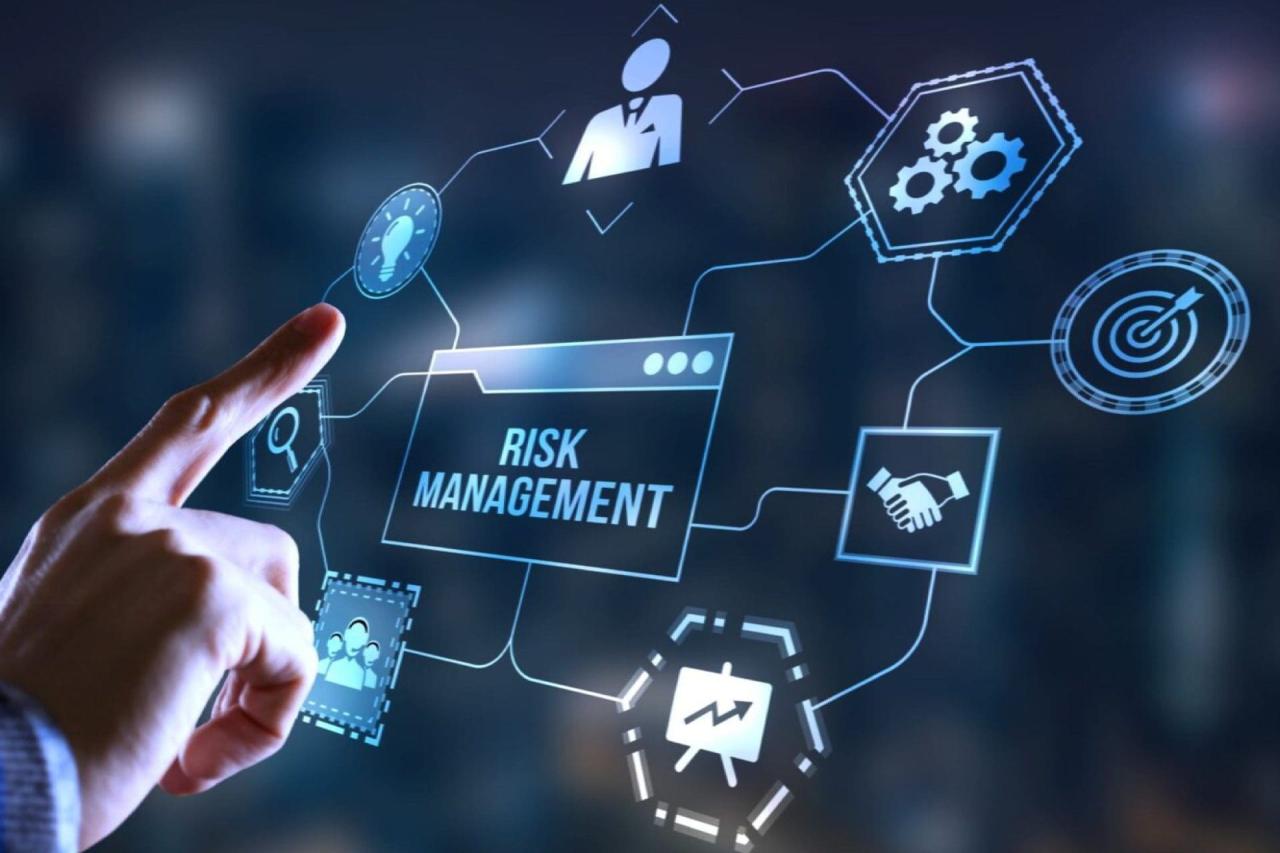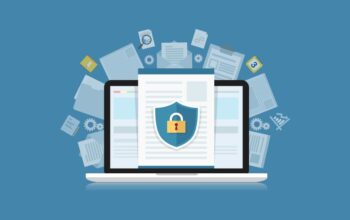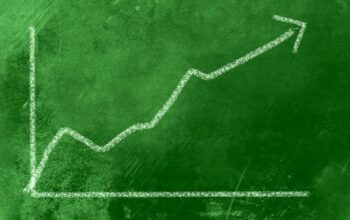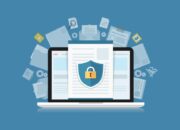In an increasingly complex and interconnected world, the concept of risk has expanded far beyond traditional financial or operational concerns. From the volatile fluctuations of global markets to the pervasive threats of cyberattacks, the unpredictable impacts of climate change, and the swift disruption of emerging technologies, organizations and individuals alike face a dynamic array of potential challenges. Navigating this intricate web of uncertainties demands a proactive, sophisticated approach: risk management. No longer just a back-office function, risk management has evolved into a strategic imperative, a fundamental pillar for resilience, innovation, and sustainable growth in the 21st century. This article delves deep into the transformative journey of risk management, exploring its foundational principles, the critical new horizons it addresses, the technological advancements empowering its practice, its profound impact across various sectors, and the future trends poised to further redefine how we perceive and mitigate uncertainty.
The Evolving Landscape of Risk
Historically, risk management primarily focused on quantifiable financial exposures, insurance, and the physical safety of assets and personnel. While these remain crucial, the nature of risk itself has broadened dramatically. We’ve moved from a relatively predictable environment to one characterized by rapid, often unprecedented change.
Several key factors contribute to this evolving risk landscape:
A. Globalization and Interconnectedness: Supply chains span continents, financial markets are instantly linked, and geopolitical events in one region can send ripple effects worldwide. This interconnectedness magnifies the potential impact of localized risks. B. Technological Disruption: The rapid pace of innovation introduces both immense opportunities and novel risks, from cybersecurity vulnerabilities and data privacy concerns to the ethical dilemmas of artificial intelligence and the societal impact of automation. C. Environmental and Climate Change: Extreme weather events, resource scarcity, and climate-related policy changes pose significant and growing physical and transitional risks to businesses and communities. D. Social and Geopolitical Volatility: Political instability, social unrest, pandemics, and shifts in consumer values can disrupt markets, damage reputations, and challenge business continuity. E. Regulatory Complexity: An ever-increasing labyrinth of national and international regulations, especially concerning data, environment, and financial conduct, introduces compliance risks that can carry severe penalties.
This dynamic environment demands that risk management transcend its traditional boundaries, embracing a more holistic, forward-looking, and agile approach.
Foundational Principles of Modern Risk Management
At its core, effective risk management is a systematic process of identifying, assessing, treating, monitoring, and communicating risks. While the tools and contexts have evolved, these fundamental steps remain critical.
A. Risk Identification
This is the process of discovering, recognizing, and describing risks. It involves understanding the organization’s objectives and identifying events that could prevent those objectives from being achieved. Techniques include:
- Brainstorming and Workshops: Engaging stakeholders from various departments to identify potential threats and opportunities.
- Checklists and Historical Data Analysis: Reviewing past incidents, industry benchmarks, and established risk registers.
- Interviews and Surveys: Gathering insights from employees, customers, and external experts.
- Process Flow Analysis: Mapping out operational processes to pinpoint vulnerabilities and single points of failure.
- PESTLE Analysis (Political, Economic, Social, Technological, Legal, Environmental): A strategic framework for identifying external macro-environmental factors that could pose risks or opportunities.
- SWOT Analysis (Strengths, Weaknesses, Opportunities, Threats): An internal assessment tool that helps identify potential risks arising from internal weaknesses or external threats.
B. Risk Assessment (Analysis)
Once identified, risks must be analyzed to understand their potential impact and likelihood. This involves:
- Likelihood: Estimating the probability of a risk event occurring (e.g., low, medium, high, or a percentage).
- Impact: Evaluating the potential consequences if the risk materializes (e.g., financial loss, reputational damage, operational disruption, legal penalties, safety incidents). This can be qualitative (e.g., severe, moderate, minor) or quantitative (e.g., estimated financial cost).
- Risk Matrix/Heat Map: A visual tool that plots likelihood against impact to prioritize risks, often categorizing them into zones like “Extreme,” “High,” “Medium,” and “Low.”
- Quantitative Analysis: Using statistical methods, financial modeling (e.g., Value at Risk – VaR), and simulation (e.g., Monte Carlo simulations) to put a numerical value on risk exposures.
C. Risk Treatment (Response)
After assessment, decisions are made on how to respond to each identified risk. Common strategies include:
- Risk Avoidance: Eliminating the activity that gives rise to the risk (e.g., deciding not to enter a risky market). This is often the most drastic response.
- Risk Reduction (Mitigation): Implementing controls and safeguards to lessen the likelihood or impact of the risk (e.g., cybersecurity measures, contingency plans, training).
- Risk Sharing/Transfer: Shifting a portion of the risk to another party, most commonly through insurance, but also through partnerships, outsourcing, or contractual agreements.
- Risk Acceptance: Deciding to bear the risk, either because the potential impact is low, the cost of mitigation outweighs the benefit, or it’s unavoidable. This should always be a conscious decision.
- Risk Exploitation (for Opportunities): While often focused on negative outcomes, modern risk management also recognizes “upside risks” or opportunities. This strategy involves taking deliberate actions to capitalize on potential positive outcomes (e.g., investing in a new technology).
D. Risk Monitoring and Review
Risk management is not a one-time event; it’s a continuous cycle. This involves:
- Regular Review: Periodically re-assessing identified risks and the effectiveness of implemented controls.
- Performance Indicators: Tracking Key Risk Indicators (KRIs) and Key Performance Indicators (KPIs) to monitor risk levels and the performance of mitigation strategies.
- Incident Management: Learning from near misses and actual incidents to improve risk identification and response.
- Environmental Scanning: Continuously monitoring the external and internal environments for new or emerging risks.
E. Communication and Consultation
Effective risk management requires transparent communication across all levels of an organization and with external stakeholders. This includes:
- Risk Reporting: Regularly informing management and boards about the organization’s risk profile.
- Stakeholder Engagement: Consulting with employees, customers, suppliers, and regulators about relevant risks.
- Culture of Risk Awareness: Fostering an organizational culture where risk is openly discussed, understood, and managed by everyone, not just a specialized team.
New Horizons in Risk Management
The evolving risk landscape has necessitated the expansion of risk management’s scope, leading to the emergence of critical new areas of focus.
A. Cybersecurity Risk Management
With the digital transformation of virtually every industry, cybersecurity risk has become paramount. This involves protecting information systems from unauthorized access, use, disclosure, disruption, modification, or destruction. Key aspects include:
- Threat Intelligence: Continuously monitoring the cyber threat landscape for new vulnerabilities and attack vectors.
- Data Privacy Compliance: Navigating complex regulations like GDPR, CCPA, and regional data protection laws, which carry severe penalties for breaches.
- Supply Chain Cyber Risk: Recognizing that a weak link in a supplier’s cybersecurity can compromise an entire organization.
- Incident Response Planning: Developing robust plans for detecting, containing, eradicating, and recovering from cyberattacks.
- Employee Training: Recognizing that human error is a major vulnerability and training staff on best security practices.
B. Climate Change and Environmental Risk
The physical and transitional risks associated with climate change are increasingly being integrated into mainstream risk management.
- Physical Risks: Assessing the impact of extreme weather events (floods, droughts, wildfires), rising sea levels, and changing temperatures on physical assets, supply chains, and operations.
- Transitional Risks: Evaluating risks arising from the shift to a low-carbon economy, including policy changes (carbon taxes), technological disruptions (clean energy adoption), market shifts (changing consumer preferences), and reputational damage for non-compliance.
- ESG (Environmental, Social, Governance) Integration: Embedding climate and environmental risks within a broader ESG framework that considers stakeholder impact and sustainable business practices.
- Climate Scenario Analysis: Using climate models to project potential future impacts and assess organizational resilience under different warming scenarios.
C. Geopolitical and Macroeconomic Risk
Global instability, trade wars, protectionism, and economic downturns pose significant external risks that require sophisticated analysis.
- Supply Chain Resilience: Moving beyond efficiency to build robust, diversified, and adaptable supply chains that can withstand geopolitical shocks.
- Currency Volatility: Managing exposure to fluctuating exchange rates.
- Political Instability: Assessing risks associated with changes in government, social unrest, and policy shifts in key markets.
- Trade Barriers and Sanctions: Understanding and preparing for the impact of evolving international trade policies.
D. Reputation and Brand Risk
In the age of social media, reputation can be built or shattered in moments. Managing reputation risk is critical.
- Social Listening: Monitoring online conversations to detect emerging issues and sentiment shifts.
- Crisis Communication Planning: Developing rapid and transparent communication strategies for managing adverse events.
- Ethical Conduct: Ensuring organizational values align with public expectations and addressing issues like diversity, equity, and inclusion.
- ESG Performance: A strong ESG record increasingly contributes to positive brand perception and reduces reputational risk.
E. Third-Party and Supply Chain Risk Management
As organizations rely more on external partners, managing risks associated with these relationships becomes crucial.
- Vendor Due Diligence: Thoroughly vetting third-party providers for financial stability, security practices, and compliance.
- Contractual Risk Transfer: Ensuring contracts clearly define responsibilities and liabilities.
- Continuous Monitoring: Regularly assessing the performance and risk profile of critical suppliers and partners.
- Resilience Planning: Developing alternative supplier strategies and contingency plans for critical components or services.
F. Ethical AI and Algorithmic Bias Risk
As artificial intelligence becomes more pervasive, new ethical and operational risks emerge.
- Bias in Algorithms: Ensuring AI models do not perpetuate or amplify societal biases (e.g., in hiring, lending, or law enforcement).
- Transparency and Explainability: Understanding how AI models make decisions and being able to explain them to stakeholders.
- Data Privacy and Security: Protecting the vast amounts of data used to train AI systems.
- Accountability: Establishing clear lines of responsibility for AI-driven decisions and their outcomes.
Technological Advancements Empowering Risk Management
The evolution of risk management wouldn’t be possible without significant strides in technology, which provide unprecedented capabilities for analysis, monitoring, and response.
A. Big Data and Advanced Analytics
The explosion of data from diverse sources (IoT devices, social media, financial transactions, weather patterns) provides a rich foundation for risk analysis.
- Predictive Modeling: Using historical data and machine learning algorithms to forecast potential risks (e.g., predicting equipment failure, identifying fraud patterns).
- Anomaly Detection: Automatically identifying unusual patterns that might indicate a emerging risk or threat (e.g., unusual network activity, sudden shifts in market sentiment).
- Real-time Monitoring: Processing streaming data to provide instantaneous insights into risk exposures and performance of controls.
B. Artificial Intelligence (AI) and Machine Learning (ML)
AI and ML are transforming every phase of risk management.
- Automated Risk Identification: AI can scan vast amounts of unstructured data (news articles, regulatory updates, internal reports) to identify emerging risks or trends.
- Enhanced Risk Assessment: ML models can more accurately assess the likelihood and impact of risks by identifying complex correlations and patterns invisible to human analysts.
- Fraud Detection: AI algorithms are highly effective at detecting sophisticated fraud schemes by analyzing transaction data and user behavior.
- Compliance Monitoring: AI can automate the monitoring of regulatory changes and ensure internal policies remain compliant.
- Robotic Process Automation (RPA): Automating routine, repetitive risk management tasks, freeing up human analysts for more complex, strategic work.
C. Blockchain Technology
While still emerging, blockchain holds significant promise for enhancing security, transparency, and trust in risk management.
- Immutable Audit Trails: Blockchain’s distributed ledger technology creates tamper-proof records of transactions and data, enhancing data integrity and auditability, particularly for supply chain risk.
- Smart Contracts: Self-executing contracts stored on a blockchain can automate risk mitigation actions (e.g., releasing payments upon specific conditions being met), reducing human error and improving efficiency.
- Enhanced Supply Chain Visibility: Blockchain can provide end-to-end transparency in supply chains, allowing for better tracking of goods and identification of points of failure or unethical practices.
D. Cloud Computing
The scalability, flexibility, and accessibility of cloud platforms are fundamental to modern risk management.
- Scalable Computing Power: Enabling complex risk models and simulations that require vast computing resources without significant upfront hardware investment.
- Data Storage and Accessibility: Providing secure and accessible storage for massive datasets crucial for risk analytics.
- Collaboration and Global Access: Facilitating real-time collaboration among risk teams across different geographies.
- Resilience and Disaster Recovery: Cloud-based risk management tools offer inherent redundancy and disaster recovery capabilities.
E. Integrated Risk Management (IRM) Platforms
Modern software platforms are moving away from siloed risk functions to provide a holistic view of an organization’s risk profile.
- Centralized Data Repositories: Consolidating risk data from various sources (operational risk, compliance, cybersecurity, financial risk) into a single system of record.
- Automated Workflows: Streamlining risk assessment, approval processes, and control monitoring.
- Real-time Dashboards: Providing intuitive visualizations of key risk indicators and the overall risk posture for management and board members.
- Regulatory Mapping: Linking identified risks to specific regulatory requirements, simplifying compliance management.
The Profound Impact Across Sectors
The adoption of these new horizons and technologies in risk management is transforming operations across virtually every industry.
A. Financial Services
Financial institutions have always been at the forefront of risk management due to the inherent nature of their business.
- Credit Risk: Advanced analytics and AI are revolutionizing credit scoring, default prediction, and portfolio management.
- Market Risk: Sophisticated models quantify exposure to interest rate, currency, and commodity price fluctuations.
- Operational Risk: Improved monitoring and automation reduce errors, fraud, and system failures.
- Regulatory Compliance: RegTech (Regulatory Technology) solutions leverage AI and automation to help institutions navigate complex and evolving compliance landscapes (e.g., AML, KYC).
- Cybersecurity: Protecting vast amounts of sensitive customer data and preventing financial fraud is paramount.
B. Manufacturing and Supply Chain
The vulnerability of global supply chains was starkly exposed during recent crises, highlighting the need for robust risk management.
- Resilience vs. Efficiency: Shifting focus from pure cost efficiency to building resilient, diversified, and transparent supply chains using real-time data and predictive analytics.
- Geopolitical Risk Mitigation: Identifying and preparing for the impact of trade wars, sanctions, and regional conflicts on sourcing and distribution.
- Sustainability Risk: Assessing environmental and social risks throughout the supply chain, including ethical sourcing and labor practices.
- Operational Disruptions: Using IoT and AI to monitor machinery health, predict maintenance needs, and prevent production stoppages.
C. Healthcare
The healthcare sector faces unique and complex risks, from patient safety to data security and regulatory compliance.
- Patient Safety: Predictive analytics to identify potential adverse events or hospital-acquired infections.
- Data Security: Protecting highly sensitive patient health information (PHI) from cyber threats and breaches.
- Drug Development Risk: AI-driven models accelerating drug discovery while managing clinical trial risks.
- Pandemic Preparedness: Enhancing capabilities to respond to public health crises, drawing lessons from recent global events.
D. Government and Public Sector
Public entities manage risks related to infrastructure, public safety, social programs, and national security.
- Critical Infrastructure Protection: Using advanced monitoring and predictive analytics to safeguard power grids, water systems, and transportation networks from cyberattacks or physical disruptions.
- Emergency Preparedness: Leveraging real-time data and AI to optimize disaster response and resource allocation.
- Policy Risk: Assessing the unintended consequences and effectiveness of new policies.
- Cyber National Security: Protecting government systems and classified information from sophisticated state-sponsored attacks.
E. Energy and Utilities
This sector faces risks from geopolitical instability, climate change, infrastructure aging, and cybersecurity threats.
- Climate Resilience: Designing and hardening energy infrastructure against extreme weather events.
- Renewable Energy Transition: Managing the unique risks associated with integrating intermittent renewable sources into the grid.
- Cyber-Physical Security: Protecting operational technology (OT) systems in power plants and grids from cyberattacks.
- Commodity Price Volatility: Hedging strategies to manage exposure to fluctuating energy prices.
Future Trends: Beyond the Horizon
The trajectory of risk management is one of continuous evolution, driven by innovation, increasing complexity, and the imperative for proactive resilience.
A. Integrated Enterprise Resilience (IER)
Moving beyond traditional Enterprise Risk Management (ERM), IER integrates risk management with business continuity, disaster recovery, crisis management, and even organizational culture. The goal is not just to manage risks but to build an inherent capacity to anticipate, adapt, and thrive in the face of disruption. This holistic approach emphasizes agility and responsiveness.
B. Hyper-Personalized Risk Management
Just as consumer experiences are becoming hyper-personalized, so too will risk management. Leveraging vast datasets and AI, risk solutions will become more tailored to specific contexts, departments, or even individual assets, providing more precise and relevant insights.
C. Quantum Computing’s Influence
While still nascent, quantum computing holds the potential to revolutionize risk modeling and analysis. Its ability to solve complex optimization problems far faster than classical computers could enable:
- More sophisticated and rapid financial risk calculations (e.g., portfolio optimization, options pricing).
- Breaking current encryption standards, necessitating entirely new cybersecurity approaches.
- Simulating highly complex systems for disaster prediction and response.
D. Ethical and Societal Risk Governance
As technology advances (e.g., AI, genetic engineering), risk management will increasingly grapple with complex ethical and societal implications that go beyond financial or operational metrics. This requires a strong governance framework to ensure responsible innovation and mitigate unintended social consequences.
E. Human-Centric Risk Management
Despite technological advancements, the human element remains crucial. Future trends will emphasize:
- Behavioral Economics in Risk: Understanding cognitive biases that influence risk perception and decision-making.
- Culture of Psychological Safety: Fostering environments where employees feel safe to report risks, near misses, and mistakes without fear of blame.
- Continuous Learning: Equipping employees with the skills and mindset to adapt to new risks and leverage new risk management tools.
F. Focus on “Black Swan” and “Grey Rhino” Events
Beyond managing known risks, there will be an increased emphasis on identifying and preparing for highly improbable, high-impact events (“Black Swans”) and obvious, yet often ignored, threats (“Grey Rhinos”). This involves developing more robust scenario planning, stress testing, and organizational adaptability.
Conclusion
Risk management, in its modern iteration, is no longer merely about mitigating negative outcomes; it’s about enabling strategic advantage, fostering innovation, and ensuring an organization’s long-term viability in a perpetually uncertain world. The advent of new technologies like AI, big data analytics, and cloud computing, coupled with the emergence of complex new risk categories spanning cybersecurity, climate change, and geopolitical volatility, has propelled risk management to the forefront of corporate strategy.
Organizations that embrace these new horizons will transcend reactive crisis management, transforming into proactively resilient entities capable of anticipating threats, seizing opportunities, and navigating disruption with agility and confidence. It’s a continuous journey of learning, adapting, and innovating, where the ability to effectively manage uncertainty becomes the ultimate competitive differentiator. In this rapidly changing landscape, robust risk management isn’t just good practice; it’s the fundamental blueprint for a secure, sustainable, and prosperous future.
